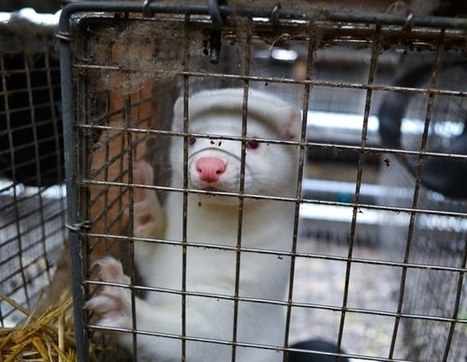An in-depth investigation of the severe acute respiratory syndrome coronavirus 2 (SARS-CoV-2) outbreaks on 16 mink farms by researchers from the Netherlands revealed that minks might serve as a reservoir for persistent infection in humans. The study is currently available on bioRxiv* preprint server. The zoonotic origin of the coronavirus disease pandemic (COVID-19), caused by the SARS-CoV-2, is thus far unknown. Animal experiments have demonstrated that non-human primates, ferrets, cats, rabbits, hamsters and bats can be infected by this virus. A recent introduction to this menagerie is the farmed mink. More specifically, infections in minks were observed in several farms in the Netherlands, while inhalable dust particles in the air of the mink houses were found to harbor SARS-CoV-2 genetic material. The virus was initially diagnosed on two mink farms in the Netherlands on Apr 23 and Apr 25, 2020. After the initial detection of the virus on these farms, an in-depth investigation was initiated to look for potential transmission routes and to conduct an occupational and environmental risk assessment.
In this new study, Dutch researchers from a range of institutions conducted an in-depth investigation into the SARS-CoV-2 outbreak in mink farms and mink farm employees in the Netherlands, combining surveillance data, epidemiological information, and whole-genome sequencing on the human-animal interface. Farm owners at the 16 mink farms positive for SARS-CoV-2 were contacted by the municipal health services in order to conduct the investigation, and their samples were taken for reverse transcription-polymerase chain reaction (RT-PCR) and serological diagnostics. The researchers selected all available near full-length Dutch SARS-CoV-2 genomes in the national database that was available on Jul 1, 2020 (1,775 in total) and aligned with the sequences obtained in this study by using MUSCLE (multiple sequence comparison by log-expectation). Additionally, to discriminate between mink farm-related SARS-CoV-2 infection and locally acquired ones, as well as to ascertain the potential risk for people residing in the proximity of mink farms, whole-genome sequencing was also performed on 34 SARS-CoV-2 positive samples from people who live in the same postal code area.
High sequence diversity of SARS-CoV-2 genomes
This study clearly shows an ongoing SARS-CoV-2 transmission in mink farms, but also pinpoints specific spill-over events to humans. A total of 68% of the tested farmworkers, their relatives, or contacts were shown to be infected with the virus – implying that the contact with SARS-CoV-2-infected mink represents a risk factor for contracting COVID-19. Moreover, phylogenetic analysis of the mink SARS-CoV-2 genomes revealed that mink sequences of 16 farms could be grouped into five different clusters. There were no obvious distinctions in the presentation of disease in animals or humans between clusters based on the currently available data. However, high diversity in the sequences from some mink farms has been observed, likely due to many generations of infected animals before a mortality surge, but possibly also as a result of already circulating virus in specific mink farms...
Preprint available at bioRxiV (Sept. 1, 2020): https://doi.org/10.1101/2020.09.01.277152
Final version published in Science (Nov. 10, 2020):
https://science.sciencemag.org/content/early/2020/11/09/science.abe5901



 Your new post is loading...
Your new post is loading...








https://marialivestockfarm.com/en/
https://marialivestockfarm.com/en/product/alpine-goats-for-sale/
https://marialivestockfarm.com/en/product/angus-cattle-for-sale/
https://marialivestockfarm.com/en/product/awassi-sheep-for-sale/
https://marialivestockfarm.com/en/product/beefmaster-cattle-for-sale/
https://marialivestockfarm.com/en/product/black-spanish-goats-for-sale/
https://marialivestockfarm.com/en/product/boer-goats-for-sale/
https://marialivestockfarm.com/en/product/boiler-chickens-and-eggs-for-sale/
https://marialivestockfarm.com/en/product/charolais-cattle-for-sale/
https://marialivestockfarm.com/en/product/dorset-sheep-for-sale/
https://marialivestockfarm.com/en/product/dropper-sheep-for-sale/
https://marialivestockfarm.com/en/product/fleckvieh-cattle-for-sale/
https://marialivestockfarm.com/en/product/girolando-cattle-for-sale/
https://marialivestockfarm.com/en/product/hereford-cattle-for-sale/
https://marialivestockfarm.com/en/product/holstein-heifer-cattle-for-sale/
https://marialivestockfarm.com/en/product/kalahari-red-goat-for-sale/
https://marialivestockfarm.com/en/product/leicester-longwool-sheep-for-sale/